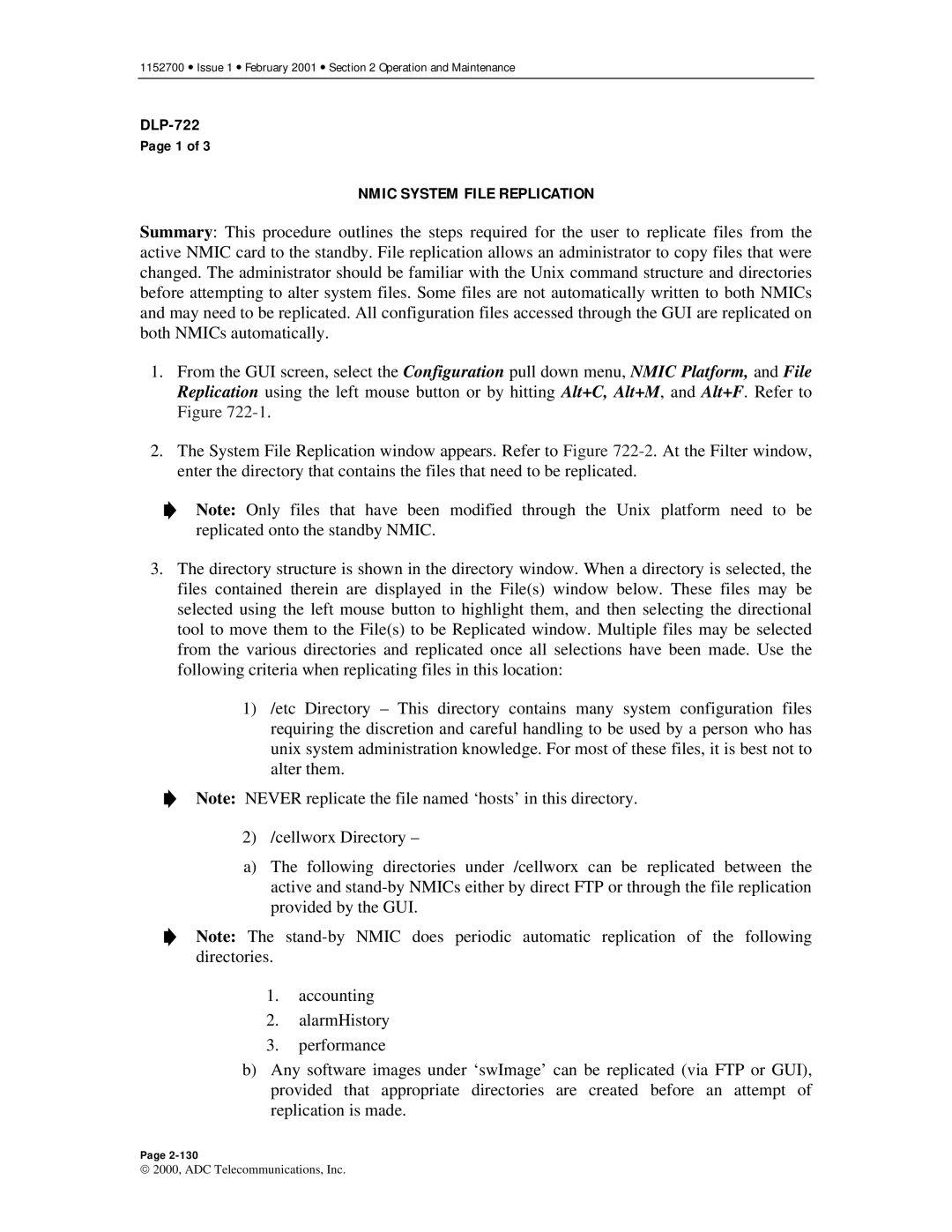
1152700 • Issue 1 • February 2001 • Section 2 Operation and Maintenance
Page 1 of 3
NMIC SYSTEM FILE REPLICATION
Summary: This procedure outlines the steps required for the user to replicate files from the active NMIC card to the standby. File replication allows an administrator to copy files that were changed. The administrator should be familiar with the Unix command structure and directories before attempting to alter system files. Some files are not automatically written to both NMICs and may need to be replicated. All configuration files accessed through the GUI are replicated on both NMICs automatically.
1.From the GUI screen, select the Configuration pull down menu, NMIC Platform, and File Replication using the left mouse button or by hitting Alt+C, Alt+M, and Alt+F. Refer to Figure
2.The System File Replication window appears. Refer to Figure
Note: Only files that have been modified through the Unix platform need to be replicated onto the standby NMIC.
3.The directory structure is shown in the directory window. When a directory is selected, the files contained therein are displayed in the File(s) window below. These files may be selected using the left mouse button to highlight them, and then selecting the directional tool to move them to the File(s) to be Replicated window. Multiple files may be selected from the various directories and replicated once all selections have been made. Use the following criteria when replicating files in this location:
1)/etc Directory – This directory contains many system configuration files requiring the discretion and careful handling to be used by a person who has unix system administration knowledge. For most of these files, it is best not to alter them.
Note: NEVER replicate the file named ‘hosts’ in this directory.
2) /cellworx Directory –
a)The following directories under /cellworx can be replicated between the active and
Note: The
1.accounting
2.alarmHistory
3.performance
b)Any software images under ‘swImage’ can be replicated (via FTP or GUI), provided that appropriate directories are created before an attempt of replication is made.
Page
2000, ADC Telecommunications, Inc.
